Electrifying a petrol engine brings useful efficiency benefits that Nissan believes is superior to plug in hybrids (which Nissan reckons frequently don’t get plugged in). The Jukes competition comes in the form of the Toyota Yaris Cross, Skoda Kamiq, Ford’s Puma, the Renault Captur and VW’s T-Roc. Against its rivals the Juke has a good interior quality and a long list of safety and equipment levels.
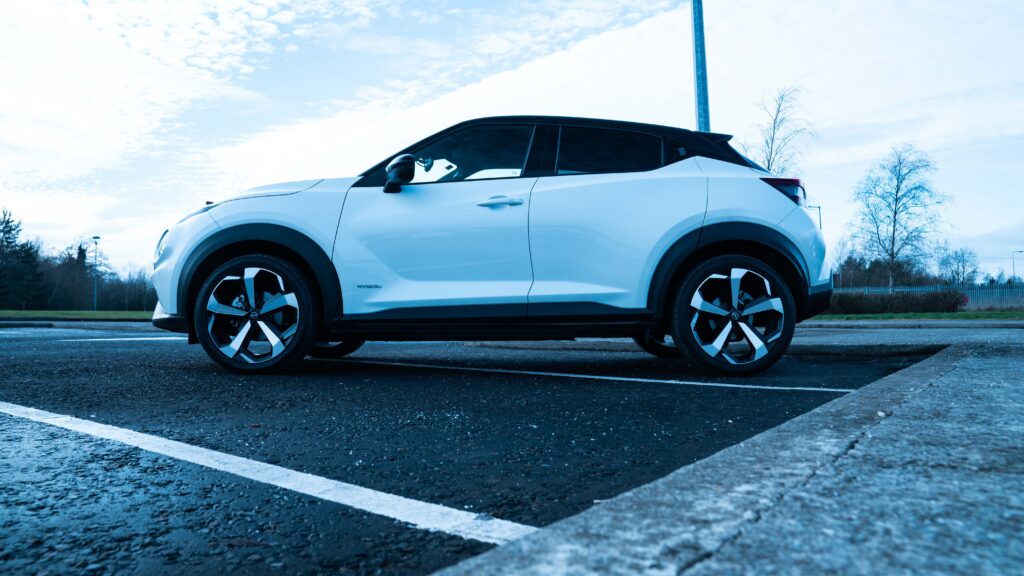
Special mention : Hybrid has plenty of low down torque on tap, which makes it phenomenal at navigating disastrously designed cities. Good cabin space & Apple CarPlay syncs quickly. Well insulated from noise on the motorway.
Needs work : Long motorway journeys can take their toll on economy. Infotainment could be upgraded with nicer graphics and plastics could be nicer on touch point areas.
| BHP 143 HP | Petrol / Auto |
| 0-100 km/h in 10.1 seconds | Road Tax €190 |
| Price: from €34,100 | Boot space 354 / 1237 litres |
The Juke’s entry-level trim comes quite well equipped with cruise control, air-con, electric windows, LED headlights and other standard kit. Safety is also high on Nissans agenda with automatic emergency braking (AEB), pedestrian detection, lane-departure warning and traffic sign recognition. The top trims as expected are pricey and come with 19in alloy wheels, heated front seats, adaptive cruise control and extra safety kit such as blind-spot monitoring and rear cross-traffic alert (to warn you of cars that are about to cross your path when you’re reversing).
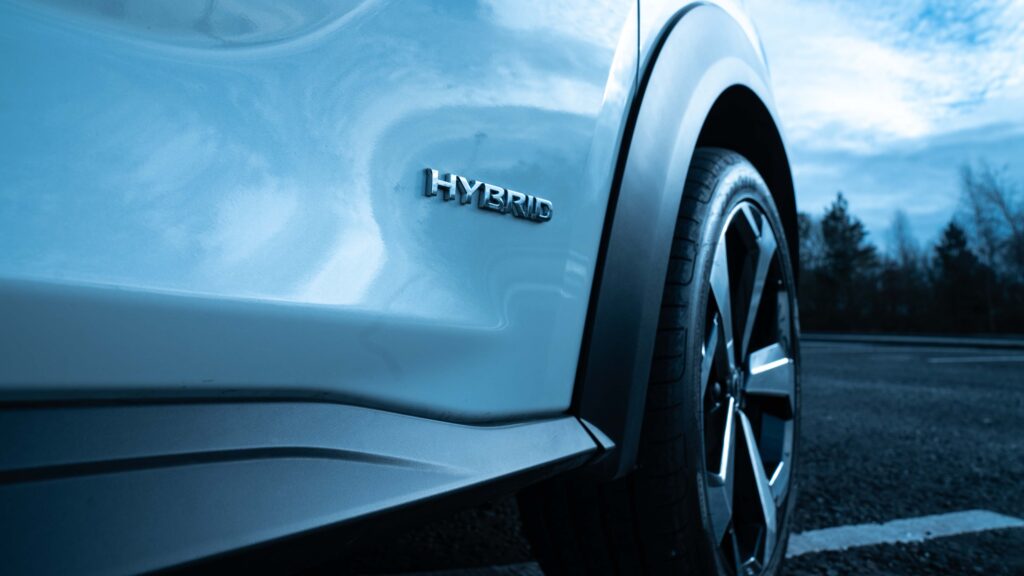
The Juke has good visibility out the front with slim A pillars, a high driving position and because it now comes with rake and reach adjustable steering, it has that SUV feel with plenty of ways to get comfortable. The pedals are well positioned too ensuring you don’t have to sit sideways behind the wheel. Unfortunately it is missing adjustable lumbar support for that extra bit of comfort on long journeys. The view out of the rear is hampered by the tapered design, thick rear pillars and small rear windows. This is where the rear view camera comes in handy and with higher level spec, the camera is upgraded to a 360-degree monitor, which gives you an overall view of the vehicle.
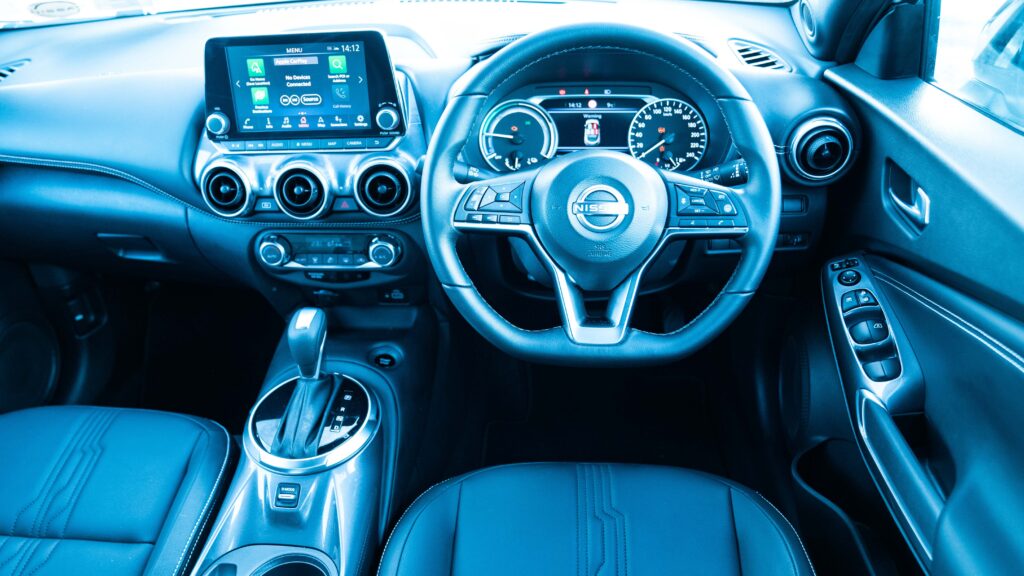
The basic infotainment comes with a small monochrome screen, Bluetooth and a USB socket. Upgrade and you get the 8.0” touchscreen with Apple CarPlay and Android Auto smartphone mirroring, there’s also the option of a built-in sat-nav with live traffic information. The Touch screen is a little laggy, the icons a little small but the eight-speaker Bose sound system upgrade is worth shelling out for, it comes with speakers in the front passenger head rests. The binnacle has a new set-up which shows you the level of power and flow of energy as well as other vehicle information.
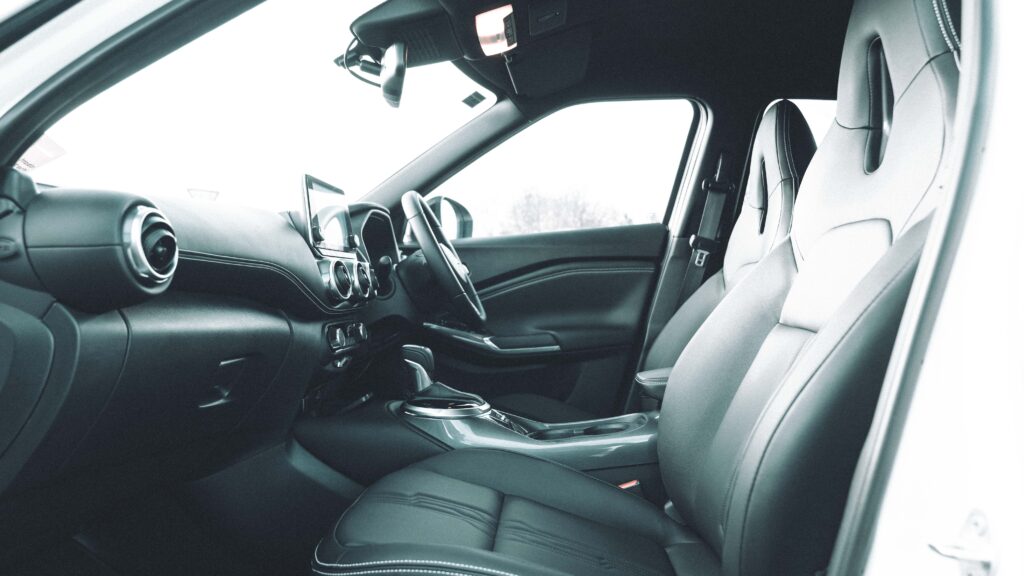
The Hybrid has a 0 -100 km/h time of 10.1sec and has that lovely way of easing itself off on electricity power alone which makes crawling through debilitating congestion so much easier. It can glide along in electric mode up to 50kms per hour. With both the engine and the electric motor pulling together it can progress up to and join at motorway speeds quite easily. Push it though and you’ll hear all about it, hybrids tend to be best driven at a gentle and calm pace. The Hybrid comes as standard with 19” alloys with an ‘aero’ design for increased efficiency. You can also option smaller 17” wheels but neither make a huge difference to the solid feeling suspension over potholes, both sizes have an effect on the cabin noise.
There’s a total of 143 hp from a 1.6-litre petrol engine and the electric motor mounted inside the ‘multi-modal’ auto gearbox which controls both. The e-Pedal helps to regenerate energy from braking which goes back into the compact 1.2 kWh battery. There are a couple of different driving modes available and when we’re dealing with family cars aimed at economic driving, having a sport mode is not one that has had much effort put into it. The steering is nicely weighted and it doesn’t roll as excessively as its French counterparts, it does feel surprisingly well composed but not dynamic enough for a Sport mode.
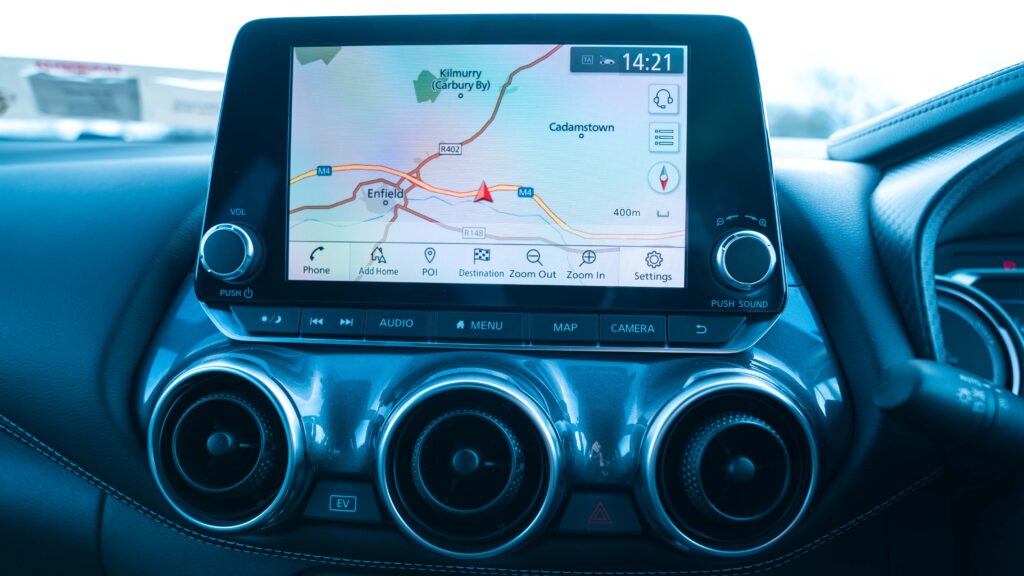
They really want you to notice the electrification of the Juke and have splashed Hybrid badges on the front wings and the boot lid. Adding to the regeneration of energy, there’s an active radiator grille which closes the shutter intake if the car’s cooling requirements are reduced.
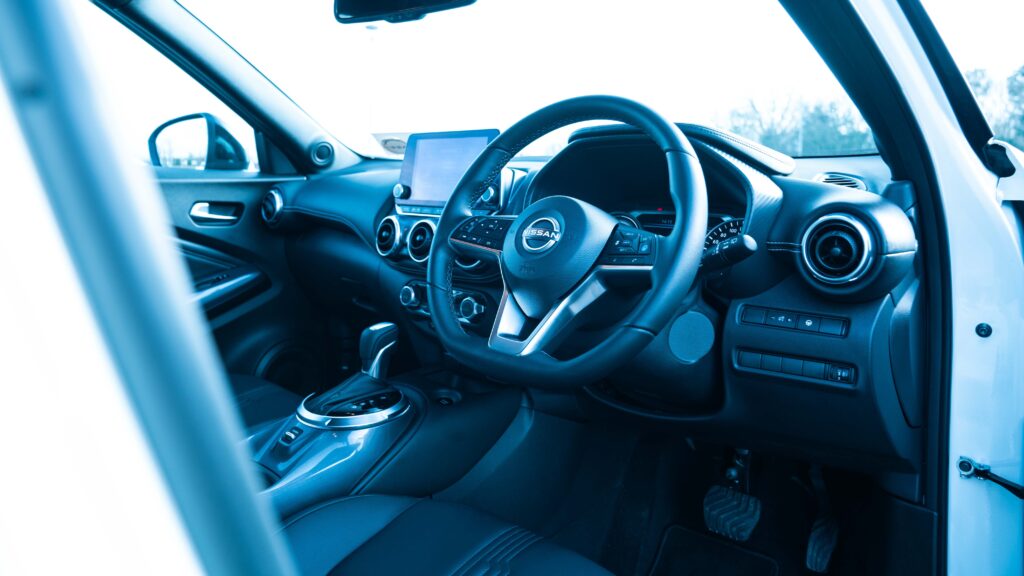
The rear space is compromised due to the hybrid battery and instead of the usual 422 litres of boot space, the Juke is left with 354 litres.With rear seats folded, the boot space remains best in class with 1237 litres, while rear knee room remains unchanged at 553mm. All versions have a 60/40 split folding rear bench but don’t slide back and forth with an adjustable angle for added comfort. It does however possess plenty of headroom for rear passengers. when the rear seats are folded down the extended load area is made easy to access via the wide boot opening.
The Juke’s ride and handling balance is better than some competitors but could go a little further. This latest powertrain delivers decent efficiency with improved performance and driving dynamics are a step above the previous generation of Juke.
